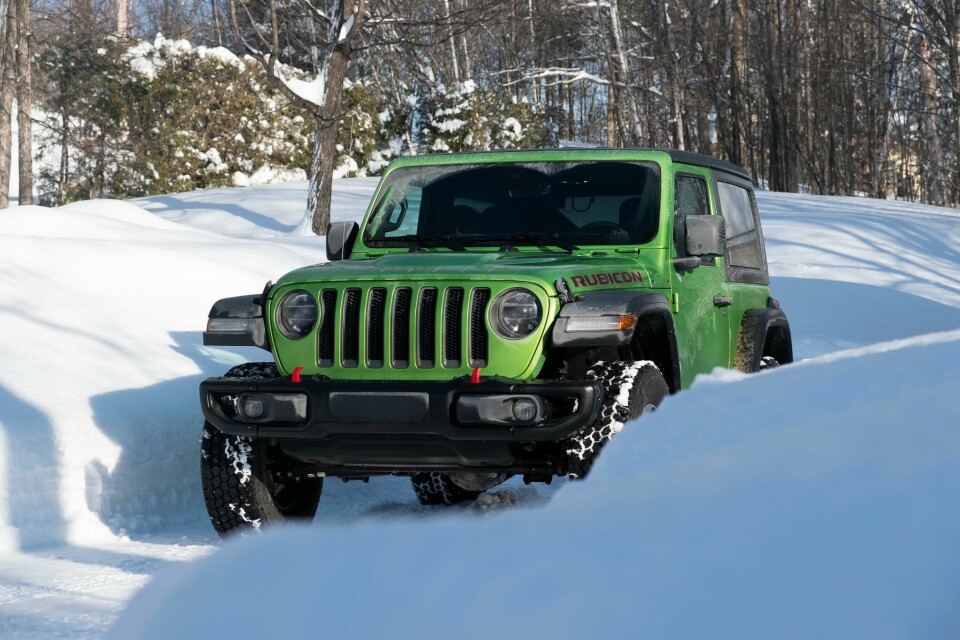
Driven: 2020 Jeep Wrangler
The Jeep Wrangler has been designed to take on the worst roads in appalling conditions. Can it live up to the task?
A blizzard rages in Montreal, Canada. Snow is piled high alongside roads that are covered in black ice. This would be a show-stopper for most vehicles, but we’ve come to drive the new 2020 Jeep Wrangler.
To have an idea of how capable the Wrangler is we must go back to its roots. The model has been a cornerstone for the Jeep brand since 1986 when it debuted at the Chicago auto show. This first generation Wrangler used the same suspension system and interior as the Cherokee, and the same body as the iconic World War II Willy’s Jeep.
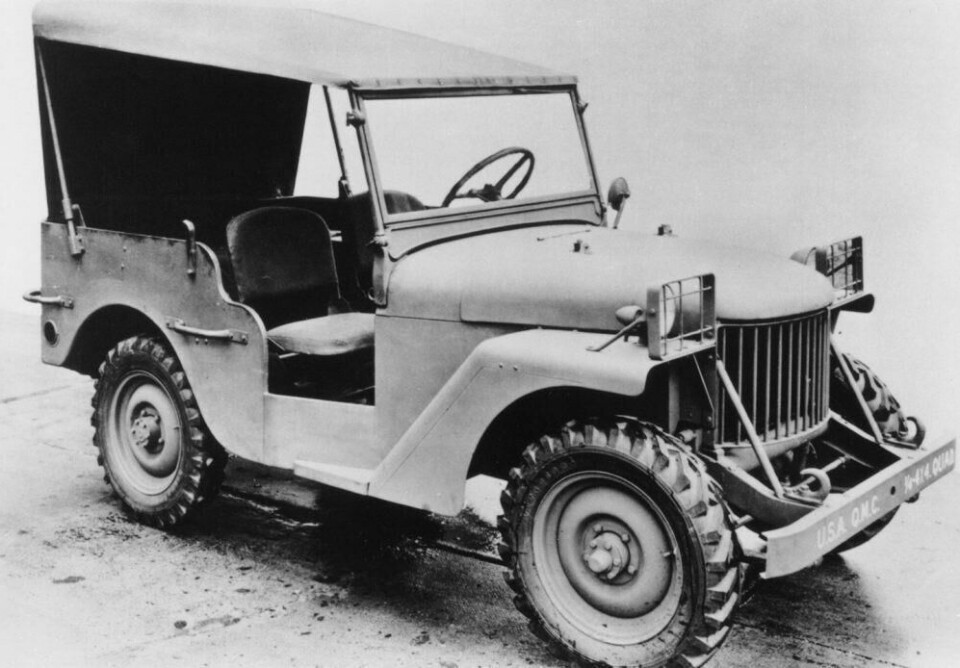
The Willy’s Jeep was designed in 1940 by Karl Probst – an engineer who was recruited by a company called American Bantam to help it win a contract to provide the US Army with a lightweight vehicle that could transport troops and equipment across extremely rough and rugged terrain.
Exterior
80 years later, and the newest Wrangler has clearly taken cues from Probst’s Jeep design. The front end is instantly recognisable with its boxy shape, slotted grille and circular headlamps. The large wheel arches jut out from the side, while the bumper protrudes just like it did on the first ever Jeep. The bonnet has two air vents to feed oxygen to the engine. It is fastened to the rest of the body by two industrial clamps that surprisingly look the part.
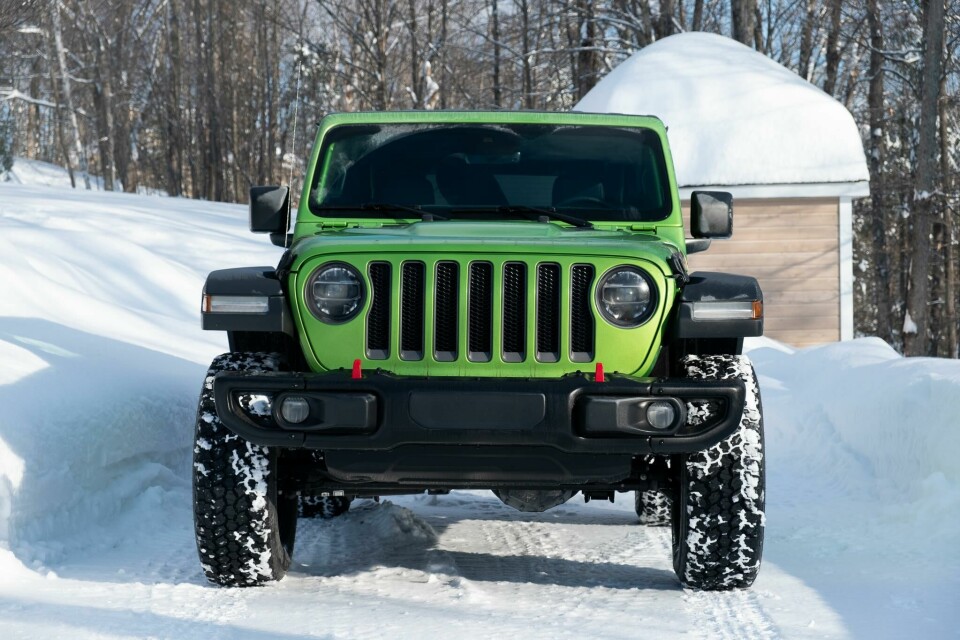
The spare wheel is, of course, mounted to the tailgate, which swings out on one set of hinges to allow for easy access to the boot. The door only makes up half of the rear of the vehicle, while the other half is a glass window which swings upwards when opened.
One of FCA’s clever design tricks on the new Wrangler is the rear-facing parking camera. It is fed through the spare wheel, providing the driver with a view that allows them to take into account the spare wheel when reversing.
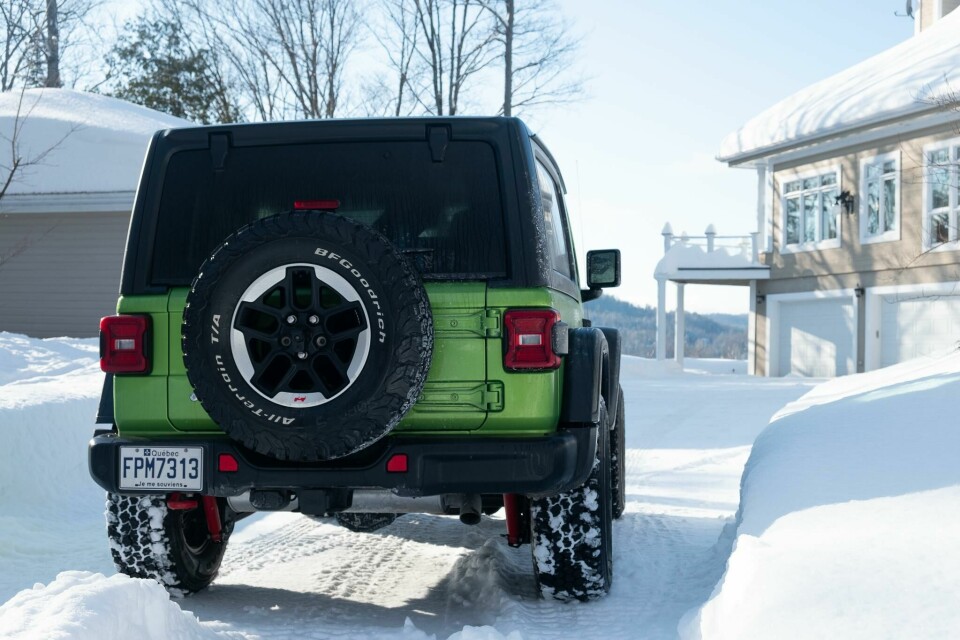
Interior and UX
There is a distinctly retro feel to the interior, with chunky knobs and switches scattered about to make the user experience simple. The dashboard sits vertically below the front windscreen, and is made up of hard-wearing materials.
A moulded plastic flap hides USB, USB-C and Aux slots. As with most things inside the Wrangler, it looks and feels as if it has been designed to withstand a hammer blow.
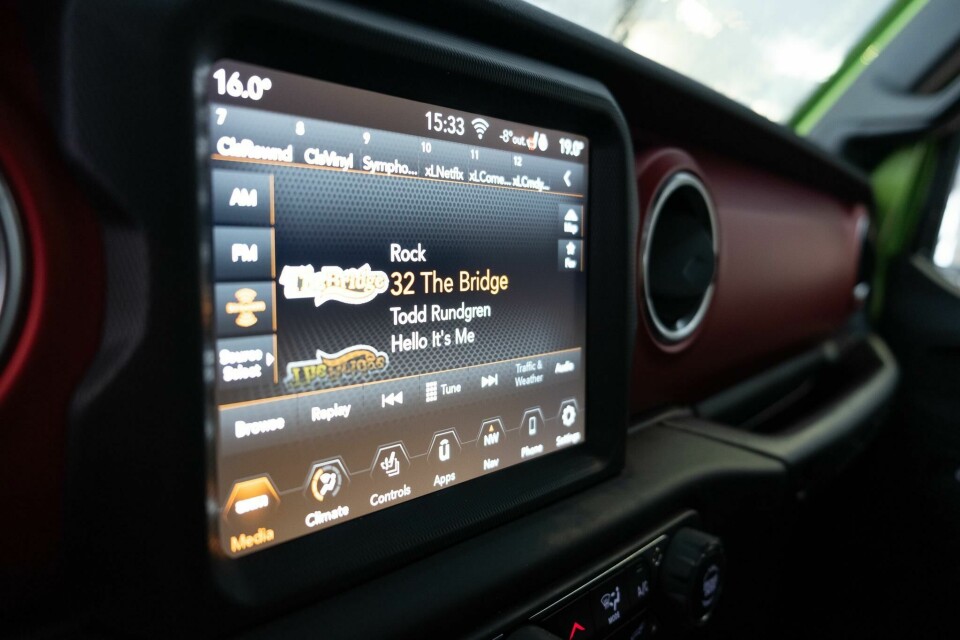
There is also an injection of modern tech – a small touchscreen is embedded in the centre of the dash, programmed with Jeep’s fourth-generation uConnect system. It is functional and displays all the necessary information, and while the graphics are not exactly cutting-edge, it’s very easy to navigate as the menu options are positioned at the bottom of the screen in hexagonal shapes at all times.
Space is ample both in the front and the back. Boot space is limited unless the rear seats are folded up, in which case there is room for snowboards, suitcases and more.
Driving
The Wrangler comes with a choice of three powertrain set-ups: a 3.6-litre Pentastar V6 with engine stop-start (ESS), a 3.6-litre Pentastar V6 with what Jeep calls mild-hybrid e-Torque technology, and a 2.0-litre turbocharged inline four-cylinder engine with ESS.
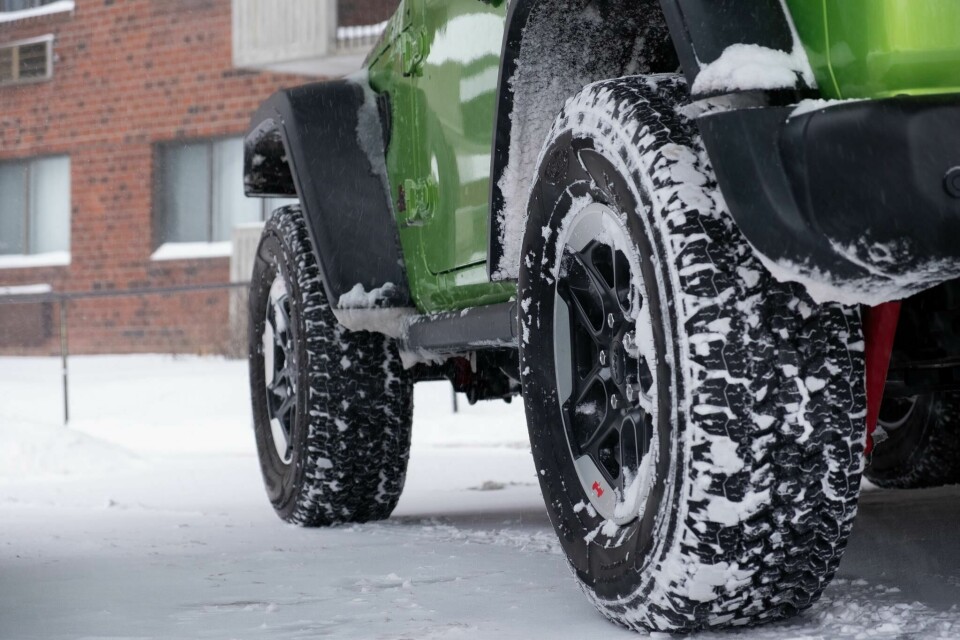
There is lots of clever powertrain technology on offer to help with off-roading or driving through snow drifts. The Rubicon variant that we tested comes with front and rear heavy-duty axles, supplied by Dana, and the Rock-Trac NV241 two-speed transfer case with a 4.0:1 low-range gear ratio. It also has electric front and rear locking differentials, a disconnecting front sway bar and 33-inch BF Goodrich KM All-Terrain tyres.
Thick fresh snow is no problem for the Wrangler. The wheels grip relentlessly, and the low-range gear ratios allow for easy hill climbs on icy paths. The 10.8-inch ground clearance would allow the Wrangler to take on some seriously bumpy off-road paths. There are also rock rails attached to the side of the vehicle and skid plates, designed to prevent damage to the underbody.
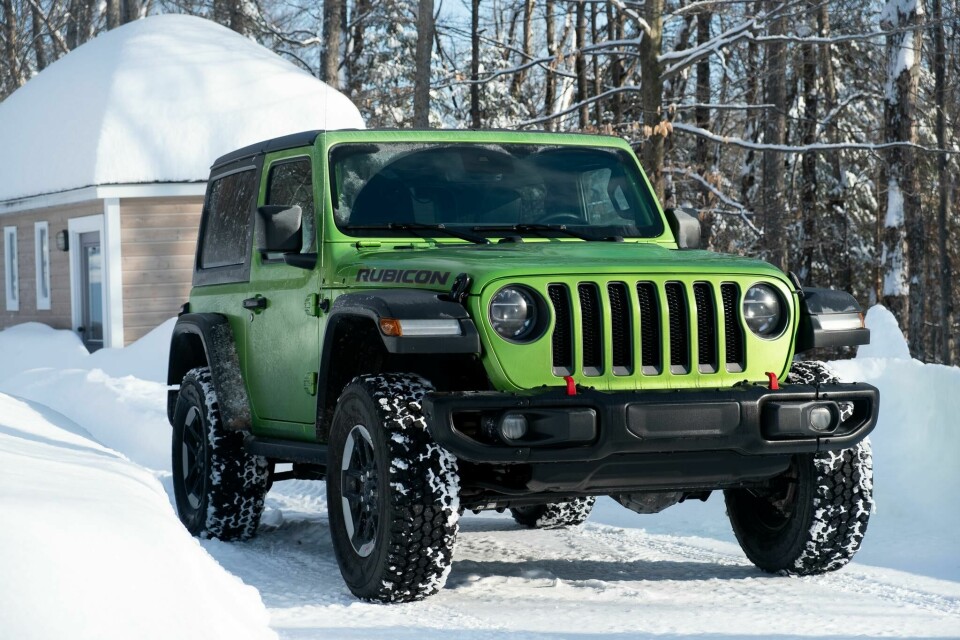
Road noise is substantial at higher speeds, though ride comfort is superb thanks to the gas-charged monotube shock absorbers.
As well as tech to handle tough driving conditions, Jeep has equipped the Wrangler with a fair amount of safety systems. In fact, there is a total of 75 standard or optional safety features, such as automatic emergency braking, adaptive cruise control and rear parking sensors.
Summary
The Jeep Wrangler has been designed to take on the worst roads in the worst conditions. Clever powertrain technology combined with the rugged body and significant ground clearance makes it possible. The blend of retro and modern for the interior works well, resulting in a simplistic yet comfortable cabin with easy-to-use systems.
With the market heavily swamped by bland SUVs that are no more capable when it comes to off-roading than a hypercar, the old-school Jeep Wrangler is now a breath of fresh air.






